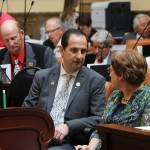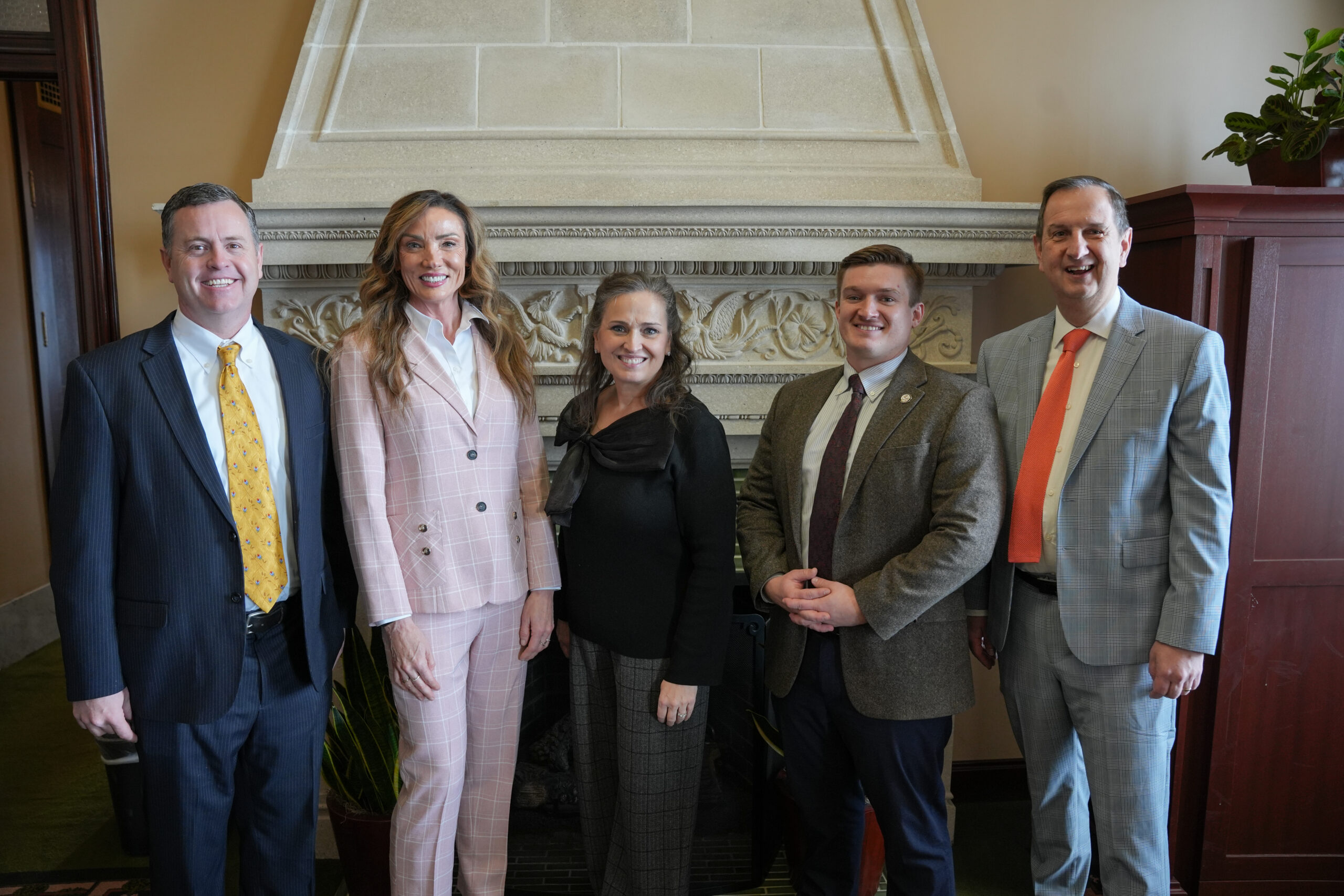It’s now a sprint to the finish line; just 9 business days left. Week Five was definitely a time for more passion, action and emotion to show up. If the previous weeks seemed like the waters were calm, this week you could start to see things come to a boil. Week Six looks like an exciting one.
Automobile Safety Inspections
I wasn’t sure if my bill (HB 319) to change or eliminate the Automobile Safety Inspection program would even see the light of day this session. First of all, it took a long time to get drafted and when I finally got something, I was so busy with the USOR move bill that I didn’t have time to set the stage properly. The Rules Committee assigned it to the wrong committee – it should have gone to Transportation or possibly Revenue and Taxation, but ended up in Law Enforcement and Criminal Justice (where bills about crimes are heard) and where there were a lot of bills in line. Fortunately, in my meeting with leaders from the Department of Public Safety (who run the program) the commissioner came forward with key information – his department has reviewed the program and cannot provide any information that shows that the program is making a difference in keeping the roads safe. In our discussions, I agreed to write a new version of the bill that ensures that DPS could keep the six trained troopers and reassign them to programs where they can indeed make a difference on keeping the roads safe. Now that the new draft with DPS’ requests is available, it has been scheduled for a committee hearing.
For those that haven’t followed this topic, here is a quick review – the safety inspection program costs Utahns $25 million a year in inspection fees, another $1 million in taxes to run the program, and an unknown amount (maybe $15 million?) in unnecessary repairs due to “false fails.” Getting rid of the program is one of the most frequent constituent requests that I get (almost as frequent as stopping the madness of clock changes). I have been collecting information and data for the past year to see what could be done. It turns out that Utah is one of only three states west of the Mississippi (along with Hawaii and Texas) and only 17 states total that still requires periodic safety inspections. So I got thinking that if California, Oregon, Nevada, and Wyoming can agree on a public safety policy, maybe we ought to take a look. *When you drive in any of our neighboring states, do you feel less safe on their roads?
I have requested that anyone that has data to show that the program actually makes the roads safer please turn it over to me for review. After looking at everything I got, here’s what I learned. I found out that the GAO did a study and issued a report last August. The main conclusion is that in the 15 states that they looked at, while officials believe the program works, they cannot quantify the benefits: “Studies GAO reviewed and GAO’s analysis of state data examined the effect of inspection programs on crash rates related to vehicle component failure, but showed no clear influence.” A local researcher did a statistical analysis comparing states that have the program with those that don’t and showed that there is no statistical difference in crash outcomes. Other research shows that despite the fact that as many as 14-20% of cars on the road at any given moment have problems needing repair, mechanical failure is a contributing cause in very few accidents (depending on who you ask, it could be as low as 2%). But over 94% of crashes nationwide are due to driver behavior, so, we must ask where will we get the biggest bang for the buck?
My conclusion is that while having a mechanic look at your car is a really good idea and many cars have work that needs to be done, component failure is the least of our concerns and the program as it is run today essentially makes no difference in terms of addressing the underlying problem to improve public safety. This is likely a combination of the fact that most “needed repairs” are not actually very dangerous and the fact that having a scheduled inspection is not a very effective way to identify and address cases where it would make a difference.
One question I get a lot is whether this will put a lot of mechanics and inspectors out of work. I highly doubt it. There may be some changes in the market place if the government stops force-feeding business through mandated purchases, but at the end of the day, there is still a great opportunity for shops to market to the public their services. In fact, it may create a renewed market or interest in advertising services like a “45 point check up” for a reasonable price. And we all know the art of the up-sell – while you are here for your emissions test, regular maintenance or oil change, would you like us to give your car a quick once-over to make sure everything is OK?
Special “Days” on the Hill
Here’s a quick run down of the special visitors and guests on the hill.
- Tuesday Museum Day on the Hill – I was thrilled to meet people from the area representing BYU Museum of Peoples and Culture and the Springville Museum of Art
- I also had the privilege of spending part of the day with student government students from Reagan Academy
- On Wednesday, we recognized the winner of the Springville Museum of Art High School Art Show and met up with small business owners from Utah County
- Thursday brought the hospital association and the Utah Cultural Alliance to the Capitol
- Friday was a crazy busy day because it was the PTA day on the Hill and the UEA Educator Day. I was so happy to have several parents and teachers from my district visit me to discuss what is happening in education policy
Voting “No” Doesn’t Mean “I Hate You”
I tend to vote “No’ more than the average legislator. There are a lot of reasons to vote against a bill. Here are just a few.
- Sometimes it’s because it’s just a bad bill – the policy doesn’t make sense.
- Sometimes it’s because the bill contains provisions that are not acceptable, even if the concept is workable.
- Sometimes the bill is just not ready and needs more time for discussion, debate and refinement.
- Sometimes the price tag is too high, or there is no funding available.
So, just because I vote “No” on a bill you like doesn’t mean I am against you or your idea.
Please Come Visit the Capitol
I love it when people visit. I had several constituents visit me on the Floor. Karen Ellingson and her daughters, Mrs. Cannon and Mrs. Ferguson (teachers at Provost Elementary), PTA officers from Westside and Art City Elementary schools in Springville, the staff of the aDDAPT program in Utah County, Jackie & Casiddy from the BYU Museum of Peoples and Culture, parents, teachers and students from Reagan Academy, and my special guests Mike Merz and Hannah Lockhart who lead the House in the pledge of allegiance and prayer.
 AnnaLea Cannon, 2nd Grade Teacher at Provost Elementary visits the House Floor for the Morning Session
AnnaLea Cannon, 2nd Grade Teacher at Provost Elementary visits the House Floor for the Morning Session
I would love to host you as my floor guest. Guests can sit with me on the House Floor during debate and see first hand how things work. We can also arrange special tours and show you some of the inner working of your legislature. Just let me know a day or two in advance, so we can make arrangements and help you have a great experience as an involved citizen.
If you missed it, make sure you read my special post on staying in contact: http://www.normthurston.com/notes-from-the-first-week/



